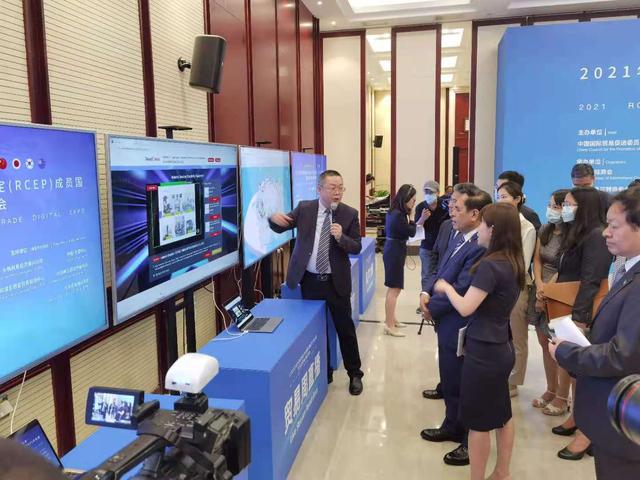2021 SSACEIF occasions knowledge about RCEP
Editor's note:
The 2021 South and Southeast Asia Commodity Expo and Investment Fair (SSACEIF) will be held online from August 25 to 29. In the context of implementation the Regional Comprehensive Economic Partnership (RCEP) and the coming operation of the China-Laos railway, the 2021 SSACEIF will highlight cross-border cooperation with the ASEAN nations and countries in the Indian Ocean region. Embracing the RCEP rules and standards, the fair aims to boost digital economy, processing trade, cross-border e-commerce and agriculture.
The RCEP Agreement consists of a preamble, 20 chapters, and a 4-part commitment list with a total of 56 annexes. Exceeding 14,000 pages, the agreement covers a diversity of topics. To give the would-be SSACEIF participants a better understanding to the RCEP, Zhu Li, dean of Economic Research Institute of Yunnan University of Finance and Economics, and Zhou Xining, director of Business Development Research Center of Yunnan International Trade Society, shared ideas on RCEP, based on their recent research.

Q: What’s the background of RCEP?
A: The RCEP Agreement, the agreement on world's largest free trade zone, was signed on November 15, 2020, having gone through rounds of negotiations over the past eight years.
Compared with other free-trade agreements, the RCEP, as a new type of free- trade agreement, covers around 2.3 billion people in 15 member countries. Accounting for 30 percent of the global population, the member countries have a total GDP of over 25 trillion US dollars. The RCEP members include 10 ASEAN countries, China, Japan, South Korea, Australia and New Zealand. The 15 countries also make up 30 percent of global GDP and trade.
China deposited the instrument of ratification with the ASEAN secretary-general on April 15, 2021, marking the completion of the ratification process for the RCEP Agreement.

Q: What does the RCEP mean to regional development?
A: Once coming into effect, the RCEP will establish a unified market by reducing tariff and non-tariff barriers among member countries, becoming the regional free-trade agreement with the largest population and the biggest potential worldwide.
The RCEP focuses on the development of East Asia’s economic integration, and its signing is a new milestone in this regard. The RCEP regional opening level is higher than that of the WTO, which will enhance regional openness and cooperation.
The RCEP will lower the threshold for preferential tariffs and facilitate intra-regional trade cooperation, while bolstering regional supply chain, stepping up "regionalization" of global value chain and improving the business environment.
The RCEP will help build up industrial value chain and production network in Asia, breaking down the trade barriers in Asia and forming unified production and stable consumption market in Asia.
Reporting by Han Chengyuan (Yunnan Daily); Trans-editing by Wang Shixue